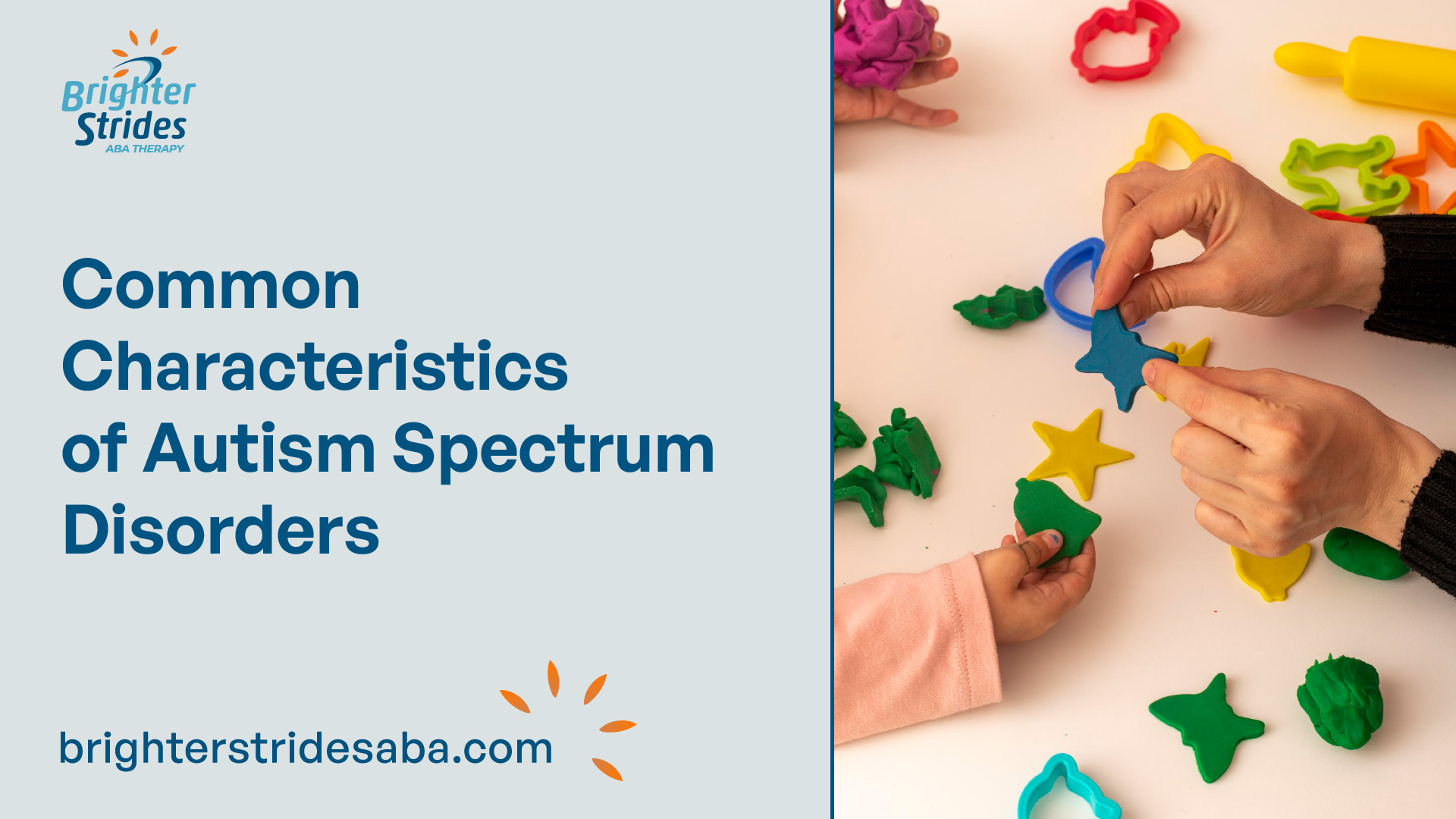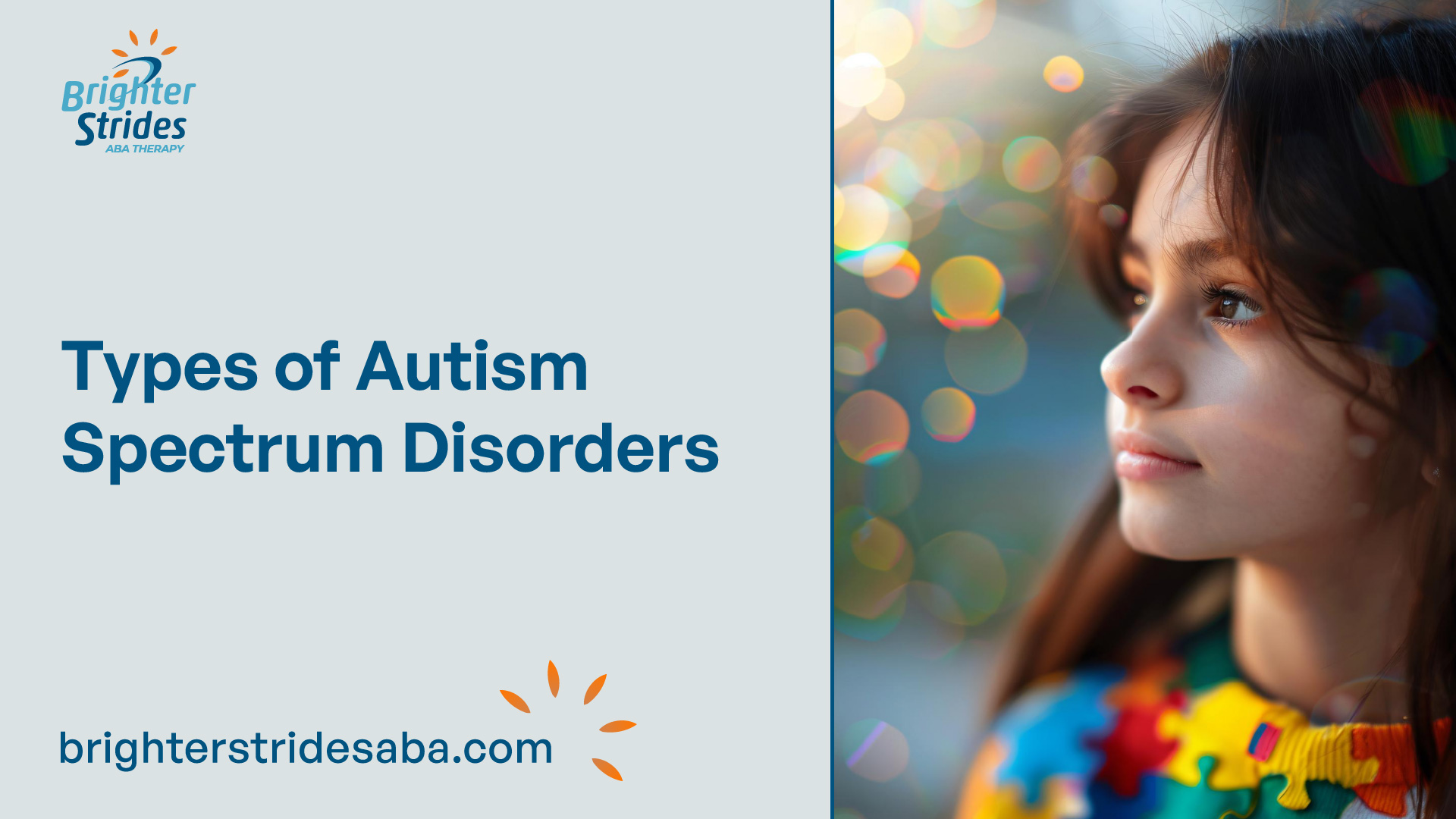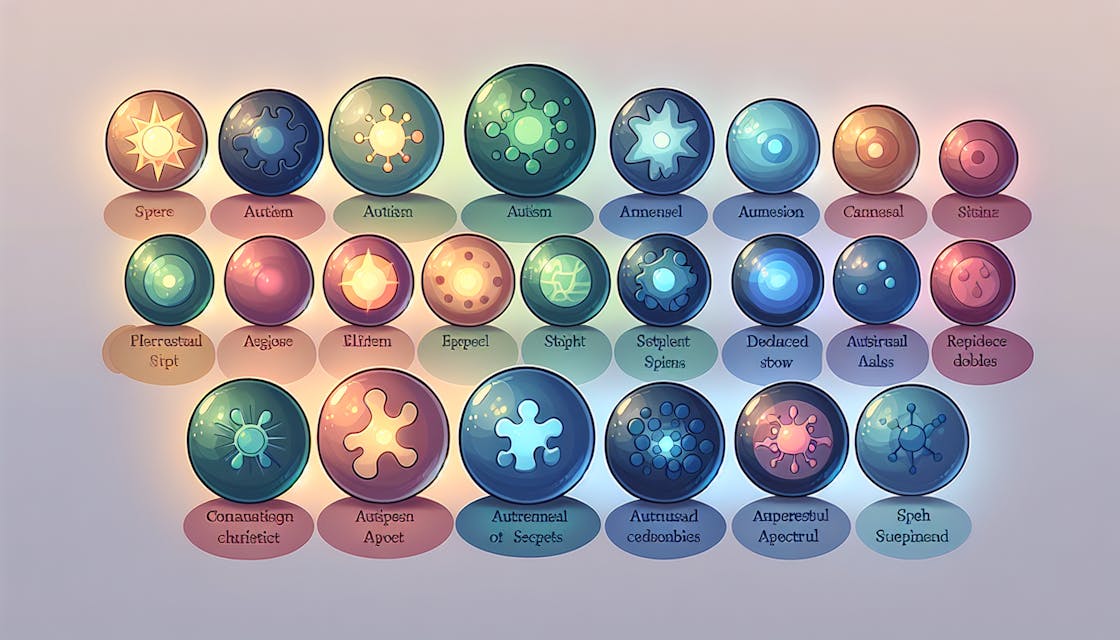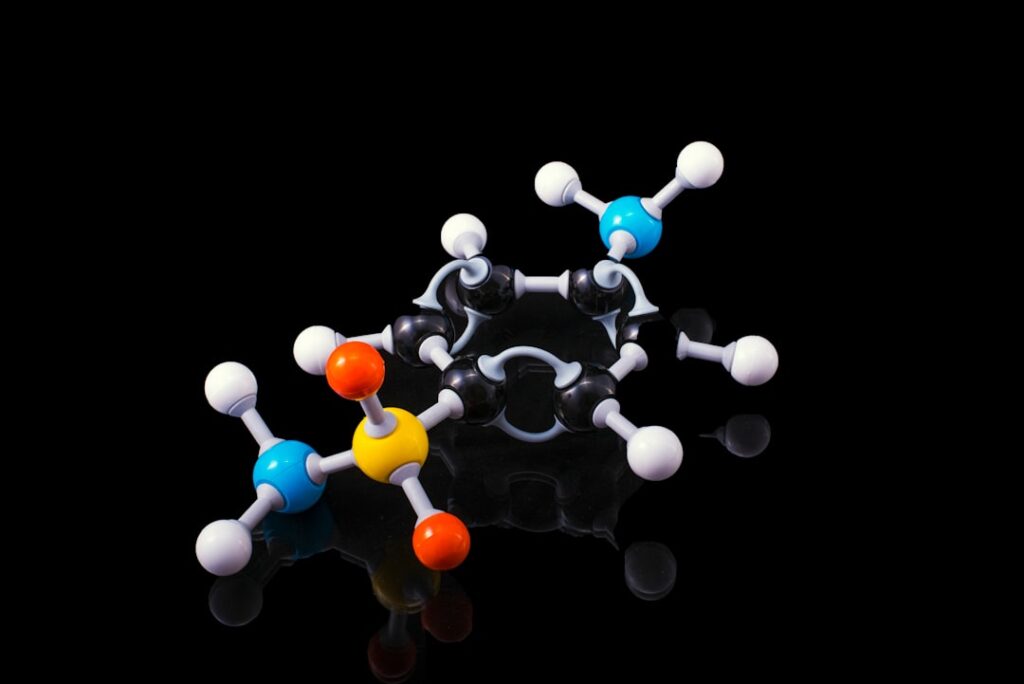
Understanding Autism Spectrum Disorders
Autism Spectrum Disorders (ASD) are a group of developmental disorders that impact communication, behavior, and social skills. ASD encompasses a wide range of symptoms, skills, and levels of impairment or disability, making it a complex disorder that affects individuals differently.
What is Autism Spectrum Disorder?
Autism Spectrum Disorder refers to a broad range of conditions characterized by challenges in social interaction, communication, and restricted or repetitive behaviors. The symptoms of ASD typically appear during the early developmental period, with the full clinical picture evolving gradually over months to years.

Common Characteristics of Autism Spectrum Disorders
While the specific symptoms and severity can vary widely among individuals with ASD, there are several common characteristics associated with autism spectrum disorders. These may include:
- Impairments in social interaction: Individuals with ASD may have difficulties in understanding and responding to social cues, such as maintaining eye contact, interpreting facial expressions, and engaging in reciprocal conversations.
- Challenges in communication: Communication difficulties can range from delayed language development to limited speech or complete absence of speech. Some individuals with ASD may rely on alternative forms of communication, such as gestures or augmentative and alternative communication (AAC) devices.
- Restricted and repetitive behaviors: Many individuals with ASD exhibit repetitive behaviors, such as hand-flapping, rocking, or specific routines. They may also display intense interests in specific topics or objects, often focusing on narrow and highly specific areas.
- Sensory sensitivities: Sensory sensitivities are common in individuals with ASD. They may be hypersensitive or hyposensitive to certain sensory stimuli, such as touch, sound, or light. These sensitivities can impact their daily functioning and may lead to sensory overload or avoidance.
It is important to note that autism spectrum disorders are highly diverse and can manifest differently in each individual. The severity of symptoms and the level of support required can also vary. Early diagnosis and intervention play a crucial role in improving outcomes for individuals with ASD.
Understanding the different types of autism spectrum disorders can provide further insights into the specific characteristics and challenges associated with each type. Let’s explore the distinct features of Autistic Disorder (Classic Autism), Asperger’s Syndrome, Pervasive Developmental Disorder – Not Otherwise Specified (PDD-NOS), Childhood Disintegrative Disorder (CDD), and Rett Syndrome in the following sections.

Types of Autism Spectrum Disorders
Autism Spectrum Disorders (ASD) encompass a range of developmental disorders that affect communication, behavior, and social skills. The spectrum includes various types of autism, each with its own distinct characteristics and challenges. In this section, we will explore the different types of autism spectrum disorders: Autistic Disorder (Classic Autism), Asperger’s Syndrome, Pervasive Developmental Disorder – Not Otherwise Specified (PDD-NOS), Childhood Disintegrative Disorder (CDD), and Rett Syndrome.
Autistic Disorder (Classic Autism)
Autistic Disorder, also known as Classic Autism, is the most severe form of ASD. It is characterized by significant language delays, social challenges, and unusual behaviors. Individuals with Autistic Disorder may exhibit repetitive movements, have difficulty with social interactions and communication, and may have a limited range of interests and activities.
Asperger’s Syndrome
Asperger’s Syndrome is considered a milder form of autism. Individuals with Asperger’s Syndrome often face challenges in social interactions and may have restricted interests. However, they typically have normal language development and cognitive skills. People with Asperger’s Syndrome may exhibit intense focus on specific topics and struggle with understanding nonverbal cues and social norms.
Pervasive Developmental Disorder – Not Otherwise Specified (PDD-NOS)
Pervasive Developmental Disorder – Not Otherwise Specified (PDD-NOS) is a diagnosis given to individuals who meet some but not all of the criteria for Autistic Disorder or Asperger’s Syndrome. The symptoms of PDD-NOS can vary widely, but generally involve challenges with social interactions, communication, and behavior. It is often used for individuals who exhibit significant difficulties but do not meet the specific criteria for other autism spectrum disorders.
Childhood Disintegrative Disorder (CDD)
Childhood Disintegrative Disorder (CDD) is a rare condition where children experience a significant loss of previously acquired skills in multiple areas, including language, social skills, and motor abilities. This loss typically occurs between the ages of 2 and 4, following a period of normal development. The cause of CDD is unknown, and more research is needed to understand this disorder.
Rett Syndrome
Rett Syndrome primarily affects females and is a rare genetic disorder. It is characterized by a loss of purposeful hand skills, slowed growth, and a regression of social and language abilities. Other symptoms may include repetitive hand movements, breathing abnormalities, and seizures. Rett Syndrome is caused by mutations in the MECP2 gene and is typically diagnosed in early childhood.
Understanding the different types of autism spectrum disorders is crucial for recognizing and addressing the unique needs of individuals with autism. It is important to remember that each person with autism is unique, and the specific characteristics and challenges may vary widely within each type. Early diagnosis and appropriate interventions can greatly contribute to improving the quality of life for individuals with autism spectrum disorders.
Characteristics of Each Type
Understanding the characteristics of each type of autism spectrum disorder (ASD) can provide valuable insights into the unique traits and challenges individuals may experience. Let’s explore the characteristics of each type: Autistic Disorder (Classic Autism), Asperger’s Syndrome, Pervasive Developmental Disorder – Not Otherwise Specified (PDD-NOS), Childhood Disintegrative Disorder (CDD), and Rett Syndrome.
Autistic Disorder (Classic Autism)
Autistic Disorder, commonly known as Classic Autism, is the most severe form of ASD. It is characterized by significant language delays, social challenges, and repetitive or unusual behaviors. Individuals with Classic Autism may exhibit repetitive movements, have difficulty with social interactions, and experience sensory sensitivities. They often require significant support and intervention to manage daily tasks and navigate social relationships.
Asperger’s Syndrome
Asperger’s Syndrome, previously recognized as a separate diagnosis, is now classified as Level 1 Autism Spectrum Disorder according to the DSM-5 diagnostic manual. Individuals with Asperger’s Syndrome typically exhibit challenges in social communication and interaction. However, they often have normal language development and cognitive skills. Individuals with Asperger’s Syndrome may have intense interests in specific subjects and display repetitive behaviors. They may struggle with understanding nonverbal cues and social nuances, requiring support and strategies to navigate social relationships.
Pervasive Developmental Disorder – Not Otherwise Specified (PDD-NOS)
Pervasive Developmental Disorder – Not Otherwise Specified (PDD-NOS) is a diagnosis given to individuals who meet some but not all of the criteria for Autistic Disorder or Asperger’s Syndrome. It is characterized by challenges in social communication and interaction, as well as restricted and repetitive patterns of behavior. Individuals with PDD-NOS may display a wide range of symptoms, making their characteristics unique to their specific situation. Early intervention and tailored support are crucial in addressing the challenges associated with PDD-NOS [3].
Childhood Disintegrative Disorder (CDD)
Childhood Disintegrative Disorder (CDD) is a rare condition that typically occurs in early childhood. It is characterized by a significant loss of previously acquired skills in multiple areas of development, including language, social, and motor skills. Children with CDD may experience a regression in their abilities, which can be distressing for both the child and their caregivers. The cause of CDD is not yet fully understood, and early intervention and support are crucial in managing the associated challenges.
Rett Syndrome
Rett Syndrome is a rare neurodevelopmental disorder that primarily affects girls, although it can also occur in boys. It is characterized by a range of challenges that impact various aspects of a child’s life. Common symptoms of Rett Syndrome include developmental regression, loss of purposeful hand skills, difficulties with motor coordination, and distinctive hand movements, such as hand-wringing. Individuals with Rett Syndrome may also experience breathing abnormalities and cognitive impairments. Early intervention and supportive care are essential in managing the challenges associated with Rett Syndrome.
Understanding the characteristics of each type of autism spectrum disorder can help individuals, their families, and healthcare professionals provide appropriate support and interventions tailored to their specific needs. Diagnosing and addressing the unique challenges associated with each type of ASD is crucial in promoting positive outcomes and enhancing the quality of life for individuals on the autism spectrum.
Diagnosis and Treatment
When it comes to autism spectrum disorders (ASD), early diagnosis and intervention are crucial for effective management. In this section, we will explore the process of diagnosing ASD and the various treatment approaches available.
Diagnosing Autism Spectrum Disorders
Diagnosing ASD can be complex due to the wide range of symptoms, skills, and levels of impairment or disability that individuals may exhibit. According to the Mayo Clinic, symptoms of ASD typically appear during the early developmental period, with the full clinical picture evolving gradually over months to years. Some children may show early signs within the first few months of life, while others may develop typically for years before experiencing a sudden regression in skills.
The diagnostic process for ASD involves comprehensive assessments that consider multiple factors, including:
- Gathering information from parents or caregivers about the child’s behavior and development.
- Conducting developmental screenings and comprehensive evaluations using standardized tools and tests.
- Observing the child’s behavior and social interactions.
- Consulting with specialists, such as psychologists, developmental pediatricians, or speech-language pathologists.
The diagnostic criteria for ASD are outlined in the Diagnostic and Statistical Manual of Mental Disorders (DSM-5), published by the American Psychiatric Association. Healthcare professionals use these criteria to determine whether an individual meets the criteria for an ASD diagnosis.
Treatment Approaches for Autism Spectrum Disorders
While there is no cure for ASD, various treatment approaches can help individuals with ASD manage their symptoms and improve their quality of life. The treatment plan is typically designed based on the specific needs and strengths of the individual. It often involves a multidisciplinary approach, incorporating various therapies, interventions, and support services. Some common treatment approaches for ASD include:
- Behavioral Therapies: Applied Behavior Analysis (ABA) is a widely used behavioral therapy approach that focuses on skill-building and behavior modification. It helps individuals with ASD develop and enhance communication, social, and daily living skills.
- Speech and Language Therapy: Many individuals with ASD experience challenges with speech and language. Speech and language therapy aims to improve communication skills, including speech articulation, understanding and using language, and social communication.
- Occupational Therapy: Occupational therapy focuses on improving sensory processing, fine motor skills, self-care skills, and promoting independence in daily tasks. It helps individuals with ASD develop skills to participate in various activities and routines.
- Educational Support: Special education programs provide tailored instruction and support for individuals with ASD. These programs address the unique learning needs and challenges associated with ASD, focusing on individualized education plans (IEPs) and evidence-based teaching strategies.
- Medication: In some cases, medication may be prescribed to manage specific symptoms or co-occurring conditions associated with ASD, such as anxiety, depression, or attention-deficit/hyperactivity disorder (ADHD). Medications should be carefully monitored and prescribed by healthcare professionals.
It is important to note that the treatment approach may vary for each individual, depending on their unique needs. Early intervention and ongoing support play a vital role in helping individuals with ASD reach their full potential and improve their overall well-being.
By diagnosing ASD early and implementing appropriate treatment and support, individuals with ASD can thrive and lead fulfilling lives, maximizing their strengths and overcoming challenges associated with their specific type of autism spectrum disorder.

 We've just released an article!
Check out our blog!
We've just released an article!
Check out our blog!



